Your 5-Step Face Care Routine to Survive the Summer Heat
- Summertime brings sunshine, trips, and outdoor activities, but it may also bring sweat, blocked pores, sunburn, dehydration, and breakouts for your skin.
- summer skincare routine for glowing skin. This season’s intense heat and elevated humidity put your skin under continual strain, which, if left untreated, can cause dullness, oiliness, and even long-term damage.
- Having a focused, season-appropriate face care regimen is so essential. Summertime demands on your skin differ from winter or monsoon conditions.
- Lightweight hydration, additional sun protection, and revitalizing elements that calm and heal after exposure to the sun are necessary.
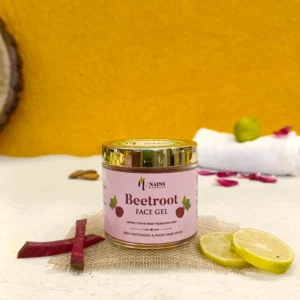
- In this article, we’ll show you how to follow a straightforward yet incredibly effective 5-step summer skincare routine that is full with dermatologist-recommended tips.
- Even in the most intense heat, this regimen will help you keep hydrated, protected, and fresh, regardless of whether you have dry, oily, or mixed skin.
- Every step, from selecting the ideal cleanser to expertly reapplying sunscreen, is intended to help you combat the heat while maintaining the health and radiance of your skin.
- Let’s get started and find out how to prepare your skin for summer in just five easy steps!
Step 1: Cleanse Gently but Effectively
Why Cleansing Is Essential in Summer:
- Any skincare regimen must start with cleansing, but this is especially true in the summer when heat, perspiration, and pollution raise the risk of clogged pores, breakouts, and lifeless skin.
- By eliminating pollutants, extra sebum (oil), grime, and perspiration that have accumulated throughout the day, a good washing regimen helps to avoid bacterial accumulation that can cause irritation and acne.
- However, because of the increased perspiration and humidity during the summer, skin tends to create more oil.
- Thus, it’s crucial to pick a cleanser that balances thorough cleaning with preserving the skin’s natural oils.
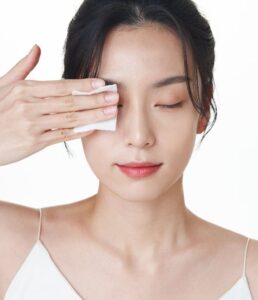
The Science Behind Gentle Cleansing:
- The acid mantle, a thin layer of perspiration and sebum that covers the skin’s surface, acts as a natural barrier to keep the pH of the skin between 4.5 and 5.5.
- Bacteria and other environmental contaminants are kept at bay by this acidic environment.
- This acid mantle can be upset by harsh cleaners with powerful detergents or an alkaline pH, which causes dryness, irritation, and an excess of oil as the skin tries to make up for it.
- This may exacerbate issues like sensitivity and acne.
- While successfully removing pollutants, gentle cleansers—ideally with a pH balance near the skin’s natural level—help maintain this barrier.
- How to Choose the Right Cleanser for Summer:
- Hydrating yet Lightweight: Seek out cleansers that have moisturizing components like aloe vera, glycerin, or hyaluronic acid. These keep the skin from becoming dry or tight while cleaning.
- Non-Comedogenic: If you have oily or acne-prone skin, pick a formula that won’t clog pores.
- Free of Harsh Sulfates: Steer clear of drying and irritating sulfates like sodium lauryl sulfate (SLS).
- Because they eliminate excess oil without leaving a thick residue, gel or foam formulations are frequently chosen for oily or mixed skin in the summer.
- Mildly scented or fragrance-free: Fragrances can irritate skin, particularly in hot weather or on delicate skin.
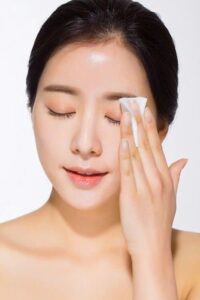
- Wash twice. Every day: In the morning to eliminate perspiration and oils that have accumulated throughout the night, and in the evening to remove pollutants, makeup, sunscreen, and grime.
- Use Lukewarm Water: Cold water might not clean as well as hot water, which removes natural oils.
- Be Gentle: Steer clear of scratchy washcloths and scrubbing. Make light circular motions with your fingertips.
- Pat Dry: To help the moisturizer absorb, gently pat your skin dry with a soft cloth, leaving some moisture behind.
- Recommended Ingredients for Summer Cleansers:
- Hyaluronic Acid: Aids in preserving moisture balance and offers gentle hydration.
- Aloe Vera: Calms skin and lessens irritation and inflammation.
- Niacinamide: Reduces redness and regulates oil production.
- Low doses of salicylic acid can help exfoliate pores and prevent acne, but they should be used with caution.
Step 2: Exfoliate Regularly

Why Exfoliation Matters in Summer:
- By eliminating dead skin cells, extra oil, and other contaminants that build up on the skin’s surface, exfoliation is an essential skincare procedure that helps preserve a glowing and healthy complexion.
- Dead skin cells can accumulate more quickly in the summer months due to an increase in perspiration, grime, and pollution, which can cause plugged pores, dullness, and outbreaks.
- Maintaining a fresh and radiant face even under intense temperatures requires regular exfoliation to clear clogged pores and encourage skin renewal.
The Science Behind Exfoliation:
- During a process known as desquamation, our skin normally sheds dead cells around every 28 to 40 days.
- However, this process can be slowed down by summertime variables including humidity, sun exposure, and excessive oil production, which can result in the accumulation of dead skin cells and a harsh texture.
- Exfoliation speeds up the process of removing these dead skin cells, exposing younger, more youthful skin beneath.
- Because it allows for better penetration, this also increases the efficacy of other skincare products.
Types of Exfoliation:
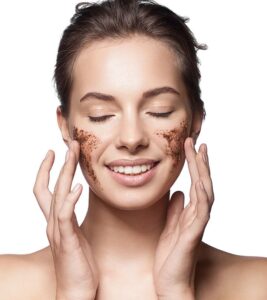
- Two primary forms of exfoliation exist:
- Physical (Mechanical) Exfoliation: This method involves physically removing dead cells using scrubs, brushes, or exfoliating cloths.
- Chemical exfoliation: breaks down dead skin cells and encourages cell turnover by using active substances such as enzymes, beta-hydroxy acids, or alpha-hydroxy acids (AHAs).
Which Type is Best for Summer?
- In contrast to physical scrubs, which can cause microtears and irritation, especially when the skin is more sensitive due to UV exposure, chemical exfoliation is generally advised for summertime because it is kinder and less harsh on sun-exposed skin.
- Glycolic acid (AHA) encourages surface exfoliation and brightening, while salicylic acid (BHA) works deep into pores to help reduce oiliness and acne.
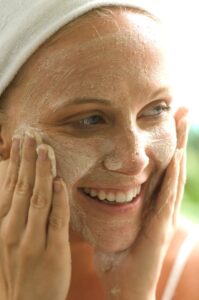
How Often Should You Exfoliate?
- In contrast to physical scrubs, which can cause microtears and irritation, especially when the skin is more sensitive due to UV exposure, chemical exfoliation is generally advised for summertime because it is kinder and less harsh on sun-exposed skin.
- Glycolic acid (AHA) encourages surface exfoliation and brightening, while salicylic acid (BHA) works deep into pores to help reduce oiliness and acne.
How Often Should You Exfoliate?
- Exfoliating two to three times a week is adequate for the majority of skin types. Excessive exfoliation can weaken the skin’s protective layer, resulting in redness, irritation, and heightened susceptibility to the sun.
- Using a mild product once a week can be preferable if you have sensitive skin.
Expert Tips for Effective Exfoliation
- Patch Test: To prevent irritation or allergic reactions, always conduct a patch test before using a new exfoliating product.
- Sun Protection: It’s important to wear sunscreen every day because exfoliation might make your skin more vulnerable to UV radiation.
- Hydrate After Exfoliating: Use a calming, hydrating moisturizer after exfoliating your skin because it may become momentarily dry.
- Exfoliating sunburned or broken skin can exacerbate sensitivity.
- utilize Gentle Motions: Steer clear of severe scrubbing when using physical exfoliants; instead, utilize gentle circular motions.
Recommended Ingredients and Products for Summer
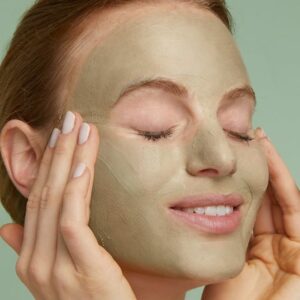
- Salicylic Acid (BHA): Perfect for skin that is prone to oiliness and acne. reduces irritation and aids in pore clearing.
- Glycolic Acid (AHA): Brightens and smoothes skin; ideal for normal to dry skin.
- Glycolic acid is harsher than lactic acid (AHA), which also moisturizes the skin while exfoliating.
- Fruits like papaya or pineapple are the source of enzymatic exfoliants, which are moderate exfoliants that are beneficial for sensitive skin.
Step 3: Hydrate with a Lightweight Moisturizer
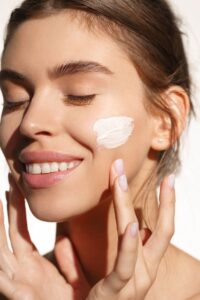
- Why Summertime Moisturising Is Still Necessary for Your Skin—Even for Oily Skin!
- The idea that you don’t need a moisturizer in the summer, particularly if you have oily or acne-prone skin, is among the most widespread misconceptions about skincare.
- The fact is that, regardless of your skin type, staying hydrated is crucial all year round. Dehydration from skipping moisturizer can cause your skin to create extra oil to make up for it, which can result in breakouts and greater shine.
- Your skin is continuously exposed to the sun, perspiration, heat, chlorine from swimming pools, and air conditioning throughout the summer, all of which can deplete its natural moisture content.
- A light, hydrating moisturizer keeps your skin hydrated, strengthens its protective layer, and keeps your complexion supple and smooth.
The Science of Hydration & Moisture:
- The stratum corneum, the skin’s outermost layer, is mostly responsible for maintaining skin hydrated. Natural moisturizing factors (NMFs) such lactic acid, urea, and amino acids are found in this layer and help to maintain the softness and elasticity of skin. Sweat and evaporation can lower these NMFs when skin is exposed to summer heat, leaving the skin exposed and dry.
- Three primary ingredients that complement one another make up moisturizers:
- Glycerin and hyaluronic acid are examples of humectants, which attract moisture to the skin.
- Emollients, such as ceramides and squalane, fill in the spaces between cells to soften and smooth skin.
- Occlusives (such as lightweight silicones and dimethicone): To stop moisture loss, create a seal.
- We seek emollient-light, humectant-rich products that hydrate without causing excessive blockage during the heat.
What to Look for in a Summer Moisturizer
- The stratum corneum, the skin’s outermost layer, is mostly responsible for maintaining skin hydrated. Natural moisturizing factors (NMFs) such lactic acid, urea, and amino acids are found in this layer and help to maintain the softness and elasticity of skin. Sweat and evaporation can lower these NMFs when skin is exposed to summer heat, leaving the skin exposed and dry.
- Three primary ingredients that complement one another make up moisturizers:
- Glycerin and hyaluronic acid are examples of humectants, which attract moisture to the skin.
- Emollients, such as ceramides and squalane, fill in the spaces between cells to soften and smooth skin.
- Occlusives (such as lightweight silicones and dimethicone): To stop moisture loss, create a seal.
- We seek emollient-light, humectant-rich products that hydrate without causing excessive blockage during the heat.
Recommended Hydrating Ingredients
- A potent humectant that can withstand 1,000 times its own weight in water is hyaluronic acid. keeps skin smooth and plump.
- Another great humectant that supports the preservation of the skin’s water balance is glycerin.
- Aloe Vera: Provides mild hydration and soothes burnt or heat-damaged skin.
- Vitamin B3, or niacinamide, balances oil production, fortifies the skin’s protective layer, and lessens inflammation.
- Antioxidant-rich green tea extract reduces inflammation and soothes sensitive skin.
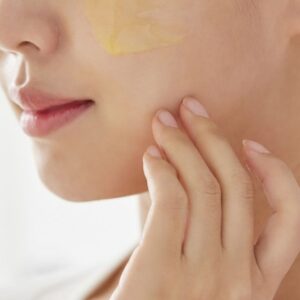
Expert Tips for Moisturizing in Summer
- Use on Damp Skin: After washing or misting your face, apply a moisturizer on slightly damp skin to further seal in hydration.
- Use Morning and Night: Even if your skin feels oily during the day, consistent hydration keeps a strong and balanced barrier.
- Apply your moisturizer after serums and before sunscreen for optimal absorption and protection.
- Avoid heavy creams: Thick occlusive lotions can clog pores and lead to congestion in humid conditions.
Common Mistakes to Avoid:
- Exfoliating causes more water loss, so don’t skip the moisturizer after. To rebuild the barrier, always use a moisturizing product thereafter.
- Mistaking Hydration for Oiliness: Dehydration can still affect oily skin. Water, not oil, is what you need.
- Using gels based on alcohol: These can be very drying and harm the skin’s protective layer, yet they may feel cooling.
Step 4: Apply Broad-Spectrum Sunscreen
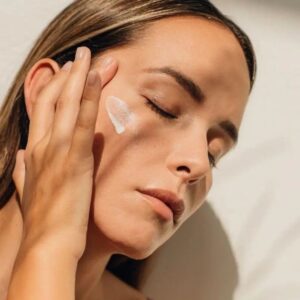
- Why Sunscreen Cannot Be Negotiated
- Sunscreen is a year-round necessity, not just for the summer. However, using a broad-spectrum SPF is essential to shielding your skin from the sun’s harmful rays throughout the summer, when UV exposure is at its highest. Exposure without protection may result in:
- Early aging (fine lines, wrinkles, sun spots)
- Redness and sunburn
- Uneven pigmentation and skin tone
- compromised skin barrier
- An increased risk of skin cancer, including melanoma
- All-around protection is ensured by broad-spectrum sunscreen, which protects against UVA (aging) and UVB (burning) rays.
How to Choose the Right Sunscreen for Summer:

- SPF 30 or Higher: For prolonged outdoor exposure, SPF 50 is the best option; SPF 30 is the very minimum that is advised.
- Broad-Spectrum Label: Verifies defense against UVA and UVB radiation.
- Water-Resistant Formula: This is crucial if you’re swimming or perspiring.
- Non-greasy, lightweight texture In hot conditions, sunscreens with a gel or fluid base feel better.
- Non-Comedogenic: Prevents breakouts and pore clogging.
How to Apply Sunscreen Effectively
- Use Enough: For the face and neck, adults should apply around 1/2 teaspoon, or the length of two fingers.
- Apply Last: Sunscreen is applied before makeup and after moisturizer.
- Especially if you’re swimming, perspiring, or spending a lot of time outside, reapply every two hours.
- Remember These Points:
- Hearing
- Eyelids (use a stick or mineral SPF)
- The décolletage and neck
- Use SPF lip balm on your lips.
- Hairline and scalp (use sunscreen or a hat)
- Common Mistakes to Avoid:
- Using sunscreen that has expired
- Applying insufficiently (the majority of people only use 25–50% of what is required)
- Not reapplying
- relying on SPF-containing cosmetics (insufficient quantity or coverage)
- Believing that you are safe on overcast days (up to 80% of UV radiation can get through clouds)
Step 5: Refresh and Repair

- Throughout the day, soothe, moisturize, and revitalize your skin.
- The last but crucial step in preserving a healthy, radiant complexion during the summer months is to rejuvenate and repair your skin.
- Continuous care throughout the day is what really keeps your skin balanced and resilient, even though the main components of your regimen are cleaning, exfoliating, moisturizing, and sun protection.
- Sweating, pollutants, high temperatures, and sun exposure can all trigger inflammation, lower skin hydration, and hasten the onset of aging or weariness.
- Midday refreshers and recovery therapies can help with that.
- Cooling masks, calming gels, and hydrating face mists all aid in cellular skin damage repair, preventing dehydration, and combating environmental stressors.
- Why This Step Matters:
- Hydration Booster: Gels and mists for the face replenish moisture lost through perspiration and heat.
- Aloe vera and cucumber are two ingredients that have a calming effect by reducing redness and inflammation.
- Support for the Barrier: Products that replenish the skin’s barrier, which has been damaged by pollution and sun exposure, aid in its restoration.
- Refreshes Makeup: A short mist gives you a natural dewy look and revitalizes worn-out makeup.
Top Refresh & Repair Essentials:

- Hydrating Mist for the Face:
- Select one that contains components such as thermal spring water, hyaluronic acid, or rose water. Without interfering with your makeup, they offer immediate cooling and moisture.
- Gel of Aloe Vera:
- A non-sticky, lightweight wonder for heat rashes, inflammation, and sunburns. Use either pure aloe or one that has antioxidants added.
- Sheet Masks for Use in the Evening:
- ideal for exposure after the sun. For relaxation and healing, look for masks that contain niacinamide, vitamin E, or green tea.
- After a hot day, use cucumber toner or ice cubes as natural ways to calm the skin, minimize puffiness, and minimize pores.
- How to Use:
- Use the facial mist two or three times a day, such as after lunch, when traveling, or anytime your skin feels dry or tight.
- Apply a small layer of aloe gel before bed or after washing. It can be applied as a moisturizer.
- Apply a sheet mask to clean skin for 10 to 15 minutes at night to restore moisture.
- Expert Advice:
- For a cooling effect, keep your aloe gel or spray in the refrigerator.
- Select formulas without alcohol to prevent skin drying out.
- When applying gel or toner while on the go, use a cotton pad or clean hands.
- What to Avoid:
- Using heavy balms or occlusive oils during the day—they can trap sweat and clog pores.
- Over-applying mists with fragrance or alcohol—they may irritate sensitive skin.
- Ignoring post-sun repair—your skin heals best overnight, so always end the day with soothing care.
FAQS
1. Can I skip moisturizer in the summer if my skin feels oily?
No. Even oily skin needs hydration. Skipping moisturizer can cause your skin to overproduce oil. Instead, use a lightweight, oil-free, non-comedogenic moisturizer that hydrates without feeling greasy.
2. How often should I reapply sunscreen during the day?
Every 2–3 hours, especially if you’re outdoors. If you’re wearing makeup, use a sunscreen spray or powder for easy reapplication without ruining your look.
3. Is exfoliating daily good for summer skin?
No. Over-exfoliating can damage your skin barrier and cause irritation. Limit exfoliation to 2–3 times a week using a gentle scrub or chemical exfoliant suited to your skin type.
4. What's the best time to use a sheet mask?
Use sheet masks in the evening or post-sun exposure to deeply hydrate, calm inflammation, and repair sun-damaged skin.
5. Can facial mists replace moisturizers?
No. Mists provide a quick hydration boost but don’t lock in moisture. Always follow up with a moisturizer to seal in hydration.
6. Do I need sunscreen indoors?
Yes, especially if you’re near windows or using devices that emit blue light. Opt for a broad-spectrum SPF with blue light protection if you’re indoors a lot.
7. Is it okay to use ice cubes on the face in summer?
Yes, occasionally. Ice cubes help cool the skin, reduce puffiness, and tighten pores. Wrap them in a soft cloth and don’t apply directly to avoid capillary damage.
8. How can I prevent sunburn if I sweat a lot?
Use a water-resistant sunscreen, wear a wide-brimmed hat, and seek shade during peak hours (10 AM – 4 PM). Reapply sunscreen more frequently if sweating heavily.
9. What’s the best face wash for summer?
Use a gentle, sulfate-free cleanser that removes dirt and oil without stripping your skin. Look for ingredients like salicylic acid (for oily/acne-prone skin) or hyaluronic acid (for dry skin).
10. Can I use aloe vera daily in summer?
Yes! Aloe vera is excellent for summer. It’s soothing, cooling, and helps heal sun-damaged skin. Use pure aloe vera gel or products with minimal additives.
